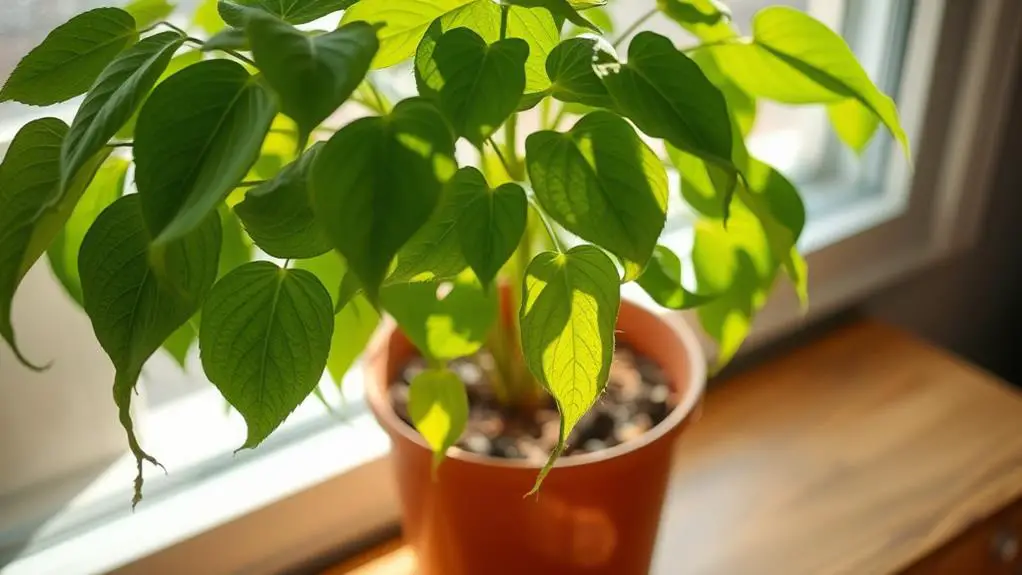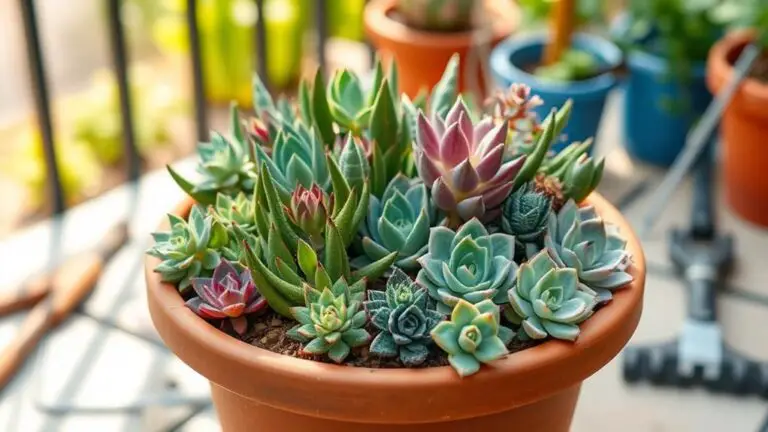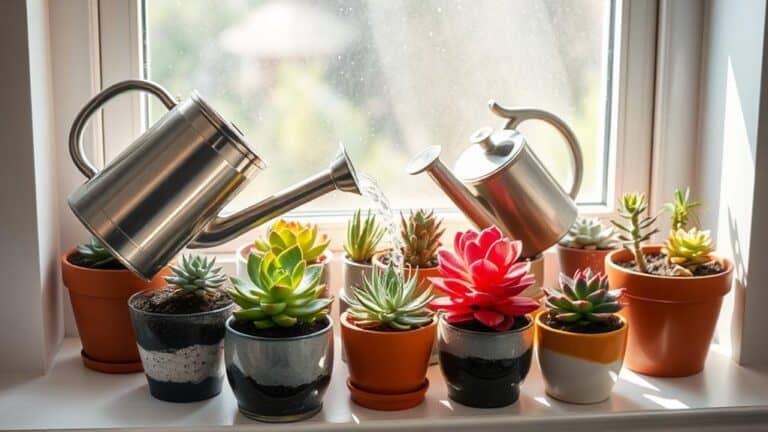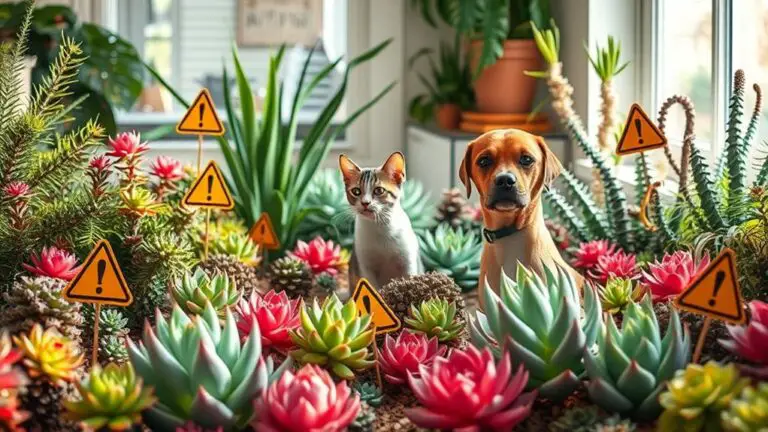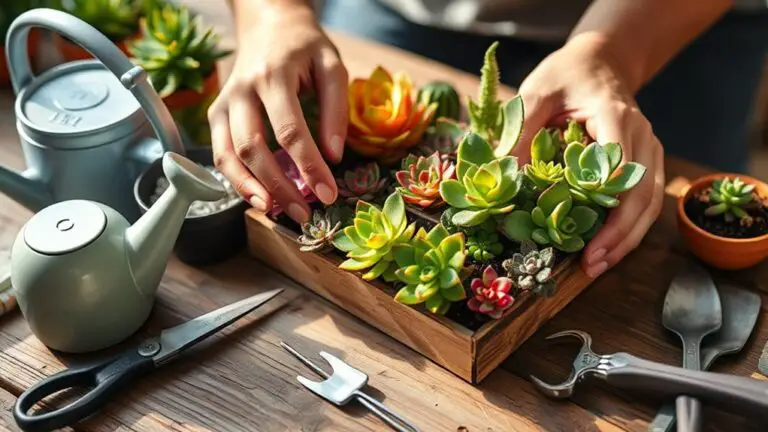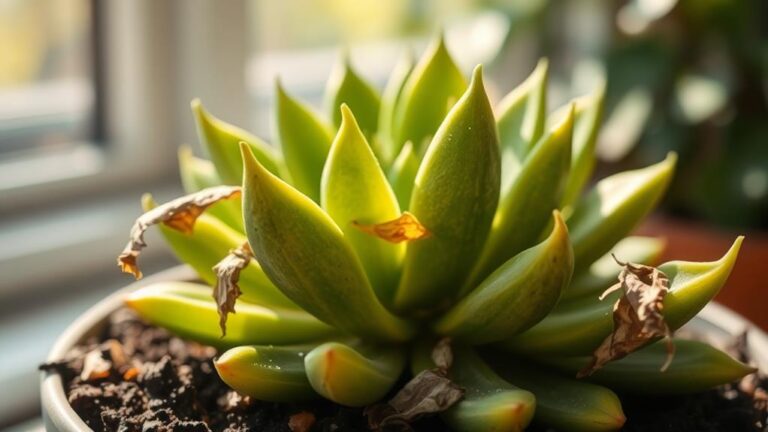Drooping Leaves – Sign of Trouble or Natural Process?
You notice your favorite houseplant's leaves are drooping, and you start to worry—are you doing something wrong? Drooping leaves can signal issues like improper watering, affecting a plant's health, but sometimes it's just a natural process. Certain plants exhibit nyctinasty, where leaves lower at night and perk up during the day. So, how do you tell if your plant is in distress or merely following its natural rhythm? Understanding this distinction can make all the difference in your plant care routine. Let's explore the nuances and get to the root of the issue.
Drooping vs. Wilting Leaves
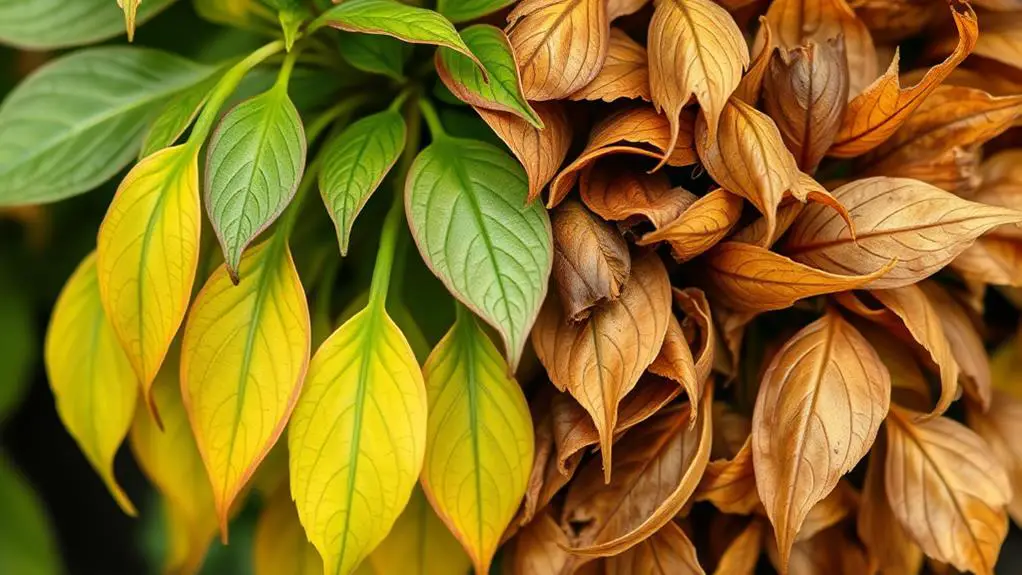
When it comes to understanding plant health, distinguishing between drooping and wilting leaves is essential. Drooping leaves hang limply but don't necessarily mean your plant is in serious trouble.
On the other hand, wilting leaves appear limp and shriveled, signaling significant stress, often due to underwatering or high temperatures.
Wilting is usually caused by a loss of turgor pressure in the plant cells, which keeps the plant rigid. Without enough water, plants can't maintain this pressure, leading to wilting.
Drooping leaves, however, can occur without a loss of overall plant health. Sometimes, it's just a natural process.
Environmental conditions play a big role in both drooping and wilting. Insufficient light, high temperatures, and humidity levels can affect your plant's appearance.
It's important to assess these conditions to understand what's happening with your plant. Remember, drooping might be a localized issue, while wilting often indicates a more serious problem affecting the entire plant.
To keep your plant healthy, verify it has a healthy root system and monitor for signs of underwatering.
Natural Drooping Processes

Understanding natural drooping processes can help you differentiate between a healthy plant and one in distress. Some plants, like Calathea, exhibit natural drooping as part of their growth cycle. This phenomenon, called nyctinasty, happens when leaves adjust to changes in light conditions.
You may notice your plant's leaves drooping at night and rising during the day, a pattern tied to diurnal rhythms. This is perfectly normal and helps the plant adapt to its environment.
Temporary drooping can also occur due to transplant shock when you move a plant to a new pot or environment. This usually resolves as the plant acclimates to its new surroundings.
Certain plants may naturally droop during the heat of the day as a protective mechanism to reduce water loss through transpiration.
Regular monitoring of light exposure and environmental conditions is essential. By keeping an eye on these factors, you can better understand when drooping leaves are part of natural growth or if there's a problem.
Causes of Drooping Leaves

Drooping leaves can be a sign that your plant needs immediate attention. When leaves start to droop, it's often due to a loss of turgor pressure, which is the pressure of water inside plant cells that keeps them firm. Underwatering is a common cause, as it reduces this pressure, making leaves limp.
On the flip side, overwatering can be just as harmful. Too much water leads to waterlogged soil, depriving the root system of oxygen and causing drooping leaves as the plant struggles to maintain its structure.
Environmental factors like high temperatures, low humidity, and insufficient light can also stress your plants. These conditions affect their ability to retain moisture and perform photosynthesis, leading to drooping.
If you've recently repotted your plant, transplant shock might be the culprit. The plant needs time to adjust to new soil conditions and root space, which can temporarily cause drooping leaves.
Pests such as spider mites and aphids are another possible cause. These pests extract sap from plants, reducing their overall health and turgor pressure.
Ultimately, a nutrient deficiency can weaken plants, making their leaves droop. Understanding these causes helps you take the right steps to care for your plants.
Watering Practices Impact
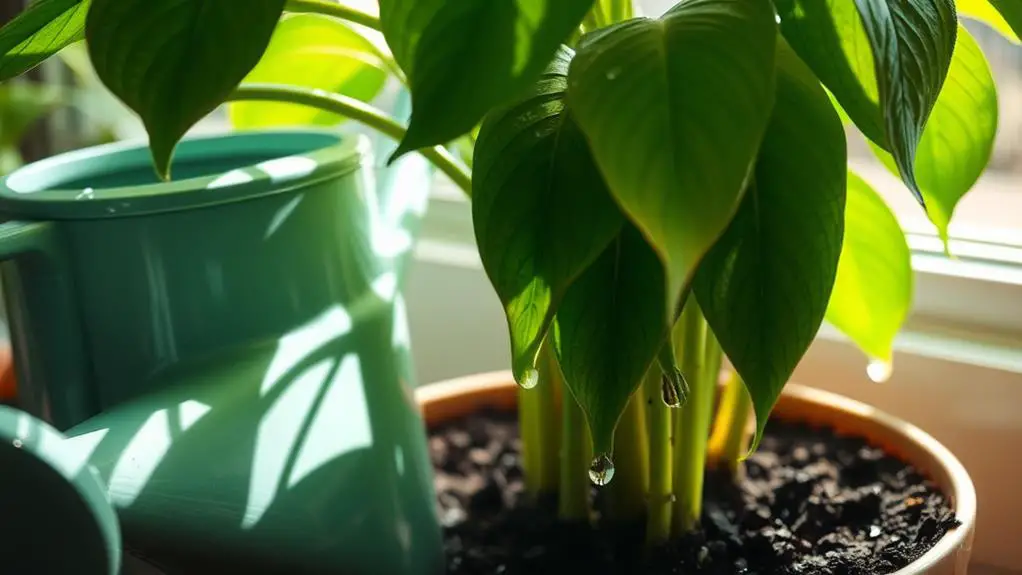
Mastering proper watering practices is essential for preventing drooping leaves and guaranteeing your plants thrive. Understanding the balance between underwatering and overwatering can make all the difference.
When you underwater, your plants lose turgor pressure, causing leaves to droop as they become limp due to inadequate hydration. On the other hand, overwatering leads to waterlogged soil, hindering root oxygen absorption, which also results in drooping leaves.
To maintain adequate moisture, check soil moisture levels at least 2-3 inches deep. The top inch may dry quickly due to heat and wind, but deeper soil holds the true moisture content. Deep watering encourages root health and growth, guaranteeing that your plants have strong foundations.
Short, frequent watering might wet the soil surface but leave roots dry, exacerbating drooping issues.
Here are some key tips to keep in mind:
- Allow the soil to dry slightly between waterings.
- Guarantee your pots have proper drainage.
- Understand the specific needs of different plant species.
- Monitor indoor plants closely, as indoor conditions vary.
- Adjust watering practices based on seasonal changes.
Reviving Drooping Houseplants
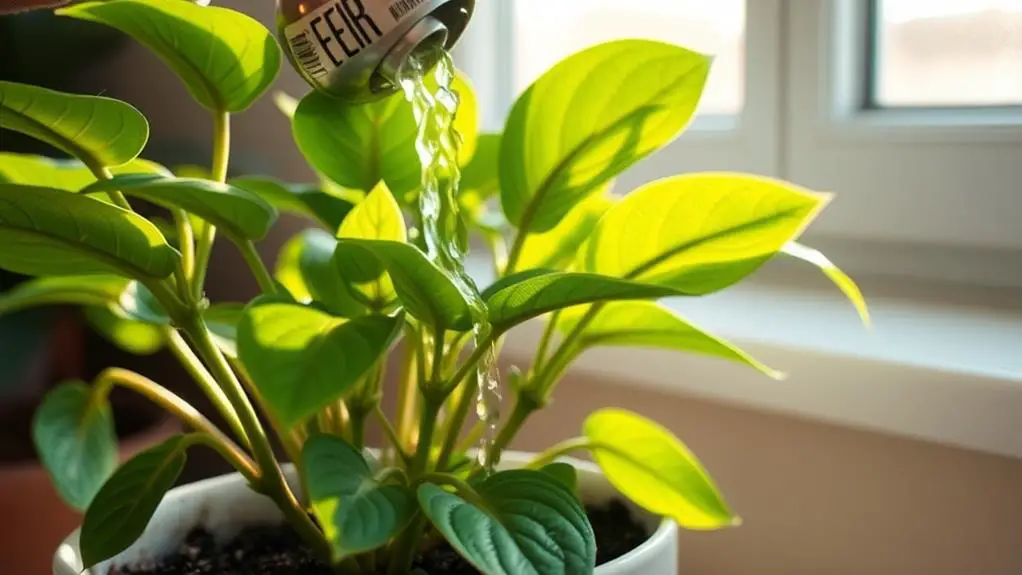
Reviving drooping houseplants starts with identifying the root cause behind their limp leaves.
First, check whether the problem is underwatering or overwatering. Both can cause drooping leaves, but the solutions are different. If the soil is dry, your plant likely needs more water. If it's soggy, you should reduce watering and guarantee the pot has proper drainage.
Trimming damaged leaves can help. Removing these parts allows the plant to focus its energy on new growth and maintaining healthy foliage.
Creating an environment with ideal humidity and stable temperatures is also vital for reviving your plant. You can mist your plant or use a humidity tray to achieve this.
If your plant is root-bound, repotting it into a larger container with fresh soil can promote healthier roots and alleviate drooping.
Regularly monitoring watering practices is essential. Make certain the soil moisture is evenly maintained to prevent future issues.
Frequently Asked Questions
What Does It Mean When Leaves Start Drooping?
When leaves start drooping, it can mean underwatering, overwatering, or environmental stress. Check soil moisture, light, and temperature. If drooping persists, adjust care. Remember, some plants naturally droop as part of their growth cycle.
What Are Wilted Leaves a Sign Of?
Wilted leaves are a sign that your plant's under significant stress, usually from under-watering or excessive heat. You should check the soil's moisture level and adjust watering practices immediately to prevent further damage and restore plant health.
Why Are My Plants Drooping Despite Watering?
Your plants might be drooping despite watering due to waterlogged soil, environmental stress, hydrophobic conditions, root-bound issues, or pest infestations. Check soil drainage, humidity, root health, and look for pests to identify the problem.
What Does Drooping Foliage Mean?
Drooping foliage usually means your plant's experiencing stress, like underwatering, overwatering, or insufficient light. However, some plants naturally droop as part of their cycle. Check for environmental factors and adjust care accordingly to help your plant.
Conclusion
Don't worry too much if you see your plant's leaves drooping. It could be a natural process, like nyctinasty, or a sign that it needs some extra care. Check the watering, light, and overall environment. Sometimes, small adjustments can make a big difference. Remember, plants are resilient, and with a little patience and attention, you can help them thrive. Keep learning and experimenting—you're doing great in your gardening journey!

